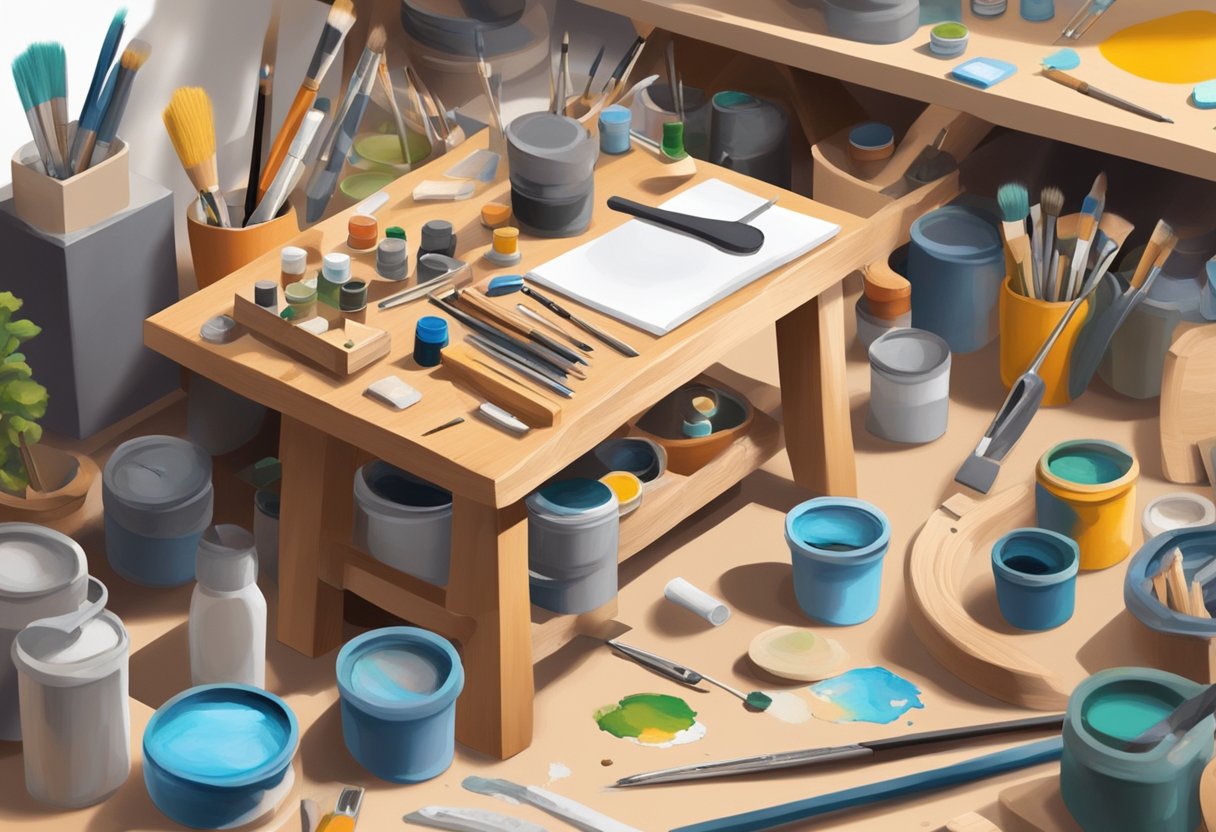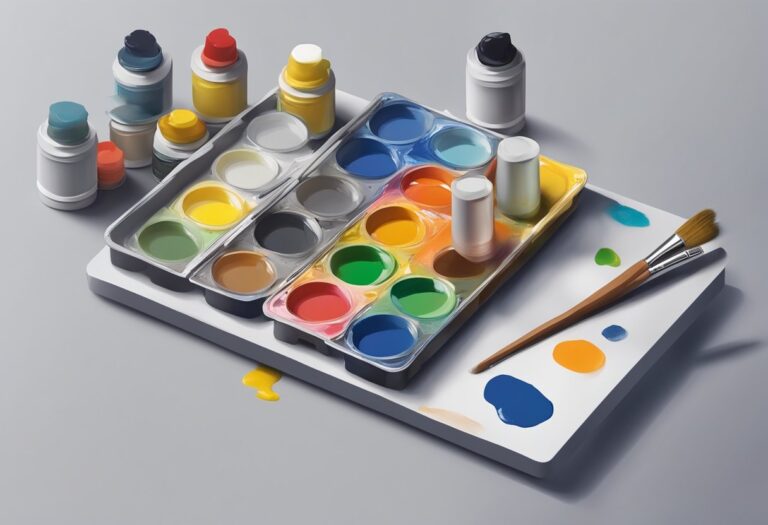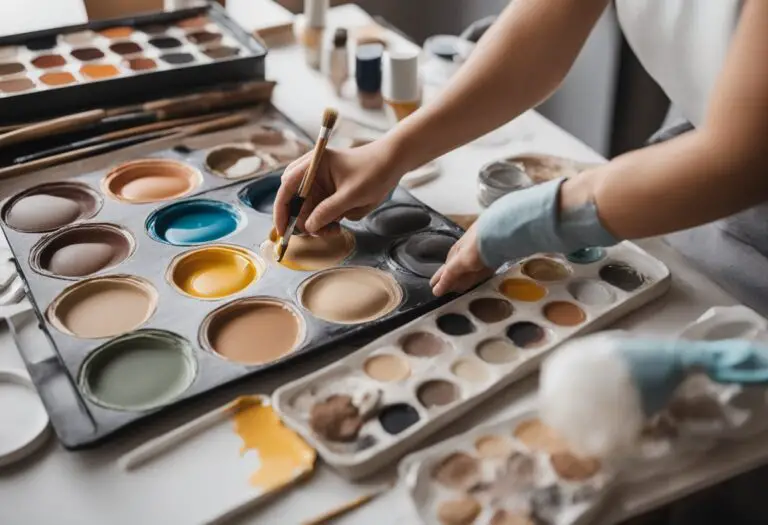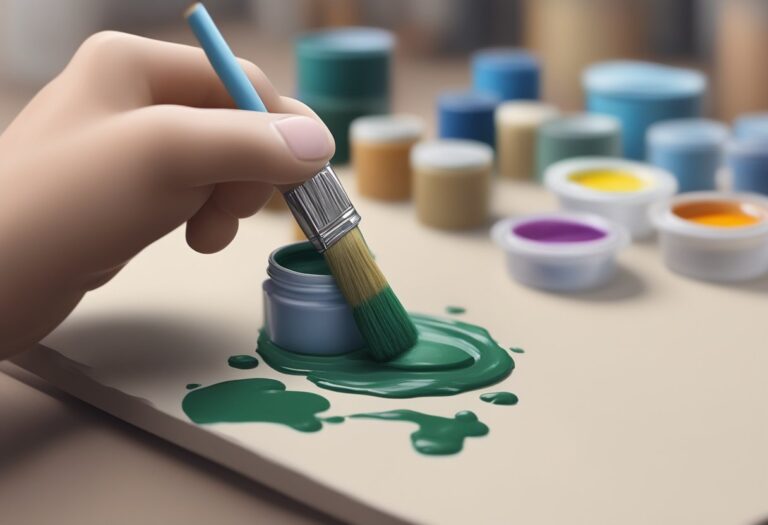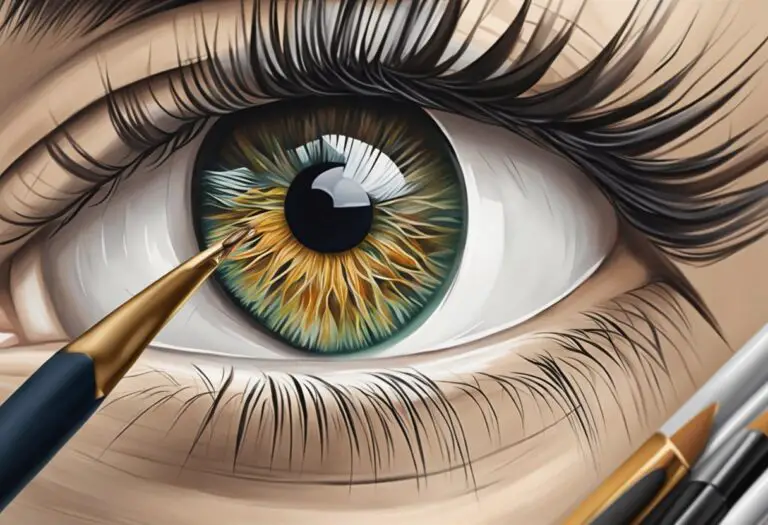Creative Miniature Basing Ideas for Hobbyists
Jessica loved spending her weekends indulging in her favorite hobby – miniature modeling. There was something about creating tiny worlds that brought her immense joy and satisfaction. But she always felt like there was something missing in her creations. Her miniature models seemed incomplete, lacking that certain wow factor she yearned for.
One day, while browsing through social media, Jessica stumbled upon a post showcasing intricately designed miniature bases. These bases transformed the entire look of the models, elevating them to a whole new level. It was like they were telling a story of their own, perfectly complementing the miniature model placed upon them.
Unbeknownst to Jessica, these stunning bases were the result of creative miniature basing ideas and meticulous attention to detail. They added a touch of realism, depth, and even whimsy to any miniature model display or diorama.
From that moment on, Jessica was determined to learn more about the art of miniature base decoration. She wanted to unlock the secrets of creating her own unique and creative miniature bases that would captivate anyone who laid eyes on her models.
In this article, we will explore a variety of miniature basing ideas and techniques to help hobbyists like Jessica enhance their miniature model displays. Whether you are a novice or an experienced miniature modeler, these creative miniature bases will inspire you to elevate your creations and tell captivating stories through your miniature modeling art.
Miniature Diorama Inspiration
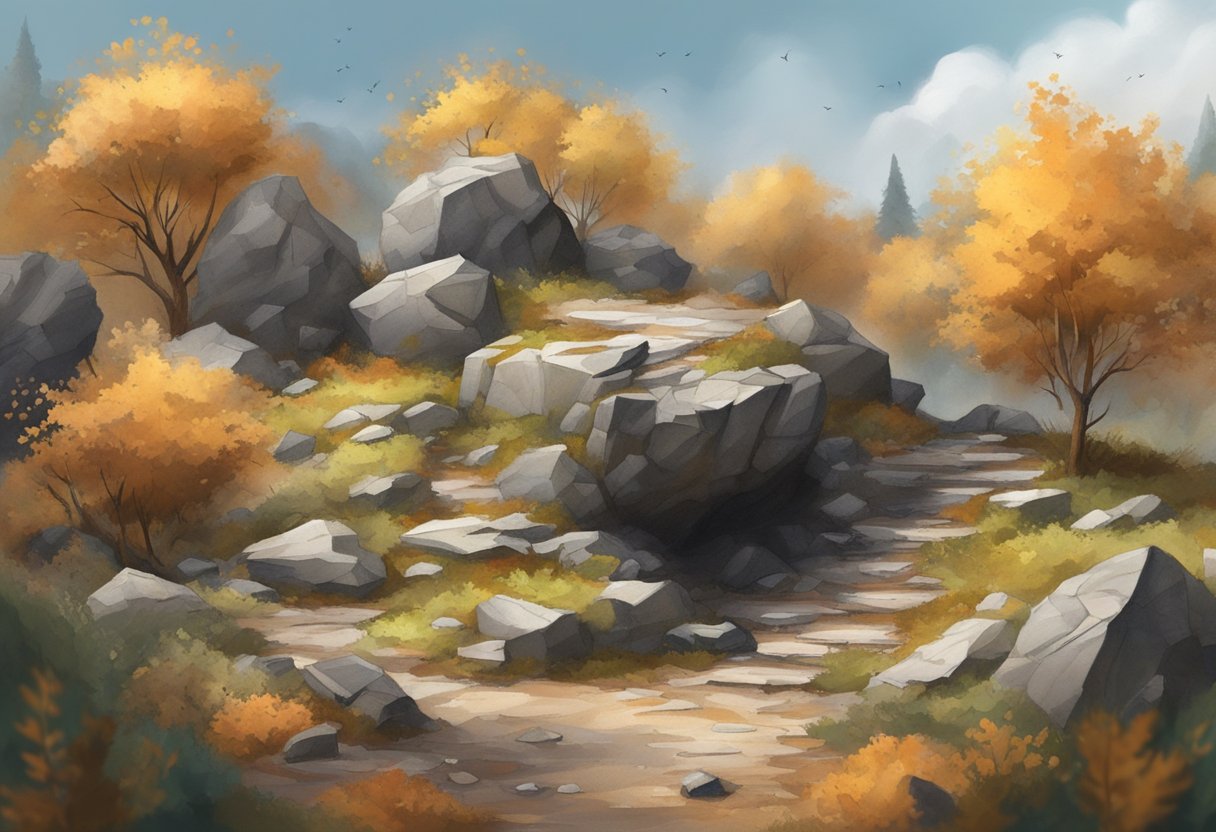
When it comes to creating captivating miniature dioramas, hobbyists can find endless inspiration by exploring unique and imaginative concepts for their miniature bases. By pushing the boundaries of creativity, they can bring their miniature models to life and transport viewers to different environments, historical scenes, or even fantastical settings.
One way hobbyists can find miniature diorama inspiration is by drawing inspiration from real-world locations. By recreating iconic landmarks or natural landscapes, they can capture the essence of a specific place and immerse viewers in its beauty. Whether it’s a miniature version of the Eiffel Tower or a serene mountain range, these scenes can evoke a sense of awe and wonder.
“Recreating famous landmarks or natural landscapes in miniature form adds a touch of realism to the diorama. It’s like having a little piece of the world right in your display.” -Jane Miller, experienced hobbyist
Historical scenes also provide a wealth of inspiration for miniature dioramas. Hobbyists can recreate significant moments from the past, such as battles, ancient civilizations, or even famous historical figures. By incorporating accurate details and meticulous research, these dioramas can educate and engage viewers while showcasing the hobbyist’s attention to detail.
For those who prefer a touch of fantasy, exploring fantastical settings opens up a world of possibilities. Hobbyists can let their imagination run wild by creating mystical forests, enchanted castles, or otherworldly landscapes. These dioramas allow for complete freedom of expression and provide a platform for showcasing unique miniature base concepts.
By exploring miniature diorama inspiration, hobbyists can find exciting and unique concepts for their miniature bases that will truly captivate viewers. Whether it’s through recreating real-world locations, delving into historical scenes, or letting their imagination run wild, the possibilities are endless for creating miniature dioramas that are truly one-of-a-kind.
Painting Miniature Bases
When it comes to creating visually stunning miniature models, attention to detail is key. These details extend beyond the miniature itself and include the base on which it stands. Painting miniature bases is an art form that can greatly enhance the overall aesthetic appeal of a model and bring life to the entire display. In this section, we will explore various techniques for painting miniature bases, from choosing the right color schemes to adding realistic textures and weathering effects.
Choosing Color Schemes
One of the first considerations when painting miniature bases is selecting the right color scheme. The colors should complement the miniature model and evoke the desired atmosphere or setting. For example, earthy tones like browns and greens are commonly used for natural environments, while gray or stone colors are suitable for urban or industrial scenes.
Consider using a mix of colors to create depth and visual interest. You can use washes or glazes to add subtle variations and highlights, further enhancing the realism of the base.
Texture Painting Techniques
Texture painting is a crucial aspect of creating realistic miniature bases. It adds depth and visual interest, making the base appear more dynamic. There are several techniques you can employ to achieve texture, such as dry brushing, stippling, or using textured paint.
Dry brushing involves using a small amount of paint on a brush and lightly brushing it over the surface of the base to highlight raised areas and create texture. Stippling, on the other hand, is done by dabbing a brush loaded with paint onto the base, creating a textured pattern. Textured paint, available in hobby stores, already has a grainy texture that can be applied directly to the base for instant texture.
Weathering Techniques
To add realism and character to your miniature bases, consider incorporating weathering techniques. Weathering mimics the effects of time, wear, and exposure to various elements. Some common weathering techniques include dry brushing with a lighter color to simulate dust or wear, applying washes to create stains or dirt, and using pigments or powders to create rust or corrosion.
“Weathering can truly bring a miniature base to life. By adding subtle hints of grime, rust, or moss, you can create a more immersive and believable scene.”
Commonly Used Colors for Miniature Bases
| Environment | Color Palette |
|---|---|
| Natural (forest, grassland) | Various shades of green, brown, and earth tones |
| Urban | Gray, light gray, black, and concrete colors |
| Desert | Sand, beige, light browns, and dusty colors |
| Underground/dungeon | Dark gray, black, brown, and mossy greens |
Creating visually appealing and convincing miniature bases requires a combination of careful color selection, texture painting techniques, and skillful weathering. By considering these factors, and experimenting with different combinations, hobbyists can elevate their miniature models and bring their display to life.
Hobby Model Basing Tips
When it comes to basing your hobby models, attention to detail can make all the difference. By choosing suitable materials, creating realistic terrain features, and incorporating dynamic elements like water effects or foliage, you can elevate the overall presentation of your miniature models. Here are some practical tips to help you enhance your hobby model basing:
- Consider the Theme: Before you begin, think about the theme or setting of your miniature model. Is it a lush forest, a barren wasteland, or a futuristic cityscape? This will guide your choice of materials and terrain features.
- Choose the Right Base: Select a base that complements the size and style of your model. There are various options available, from circular and square bases to custom-made display bases. Consider the scale and proportion to ensure a cohesive look.
- Experiment with Texture: Create depth and visual interest by adding texture to your base. Apply sand, gravel, or small rocks to simulate different terrains. You can also use textured paints or specialized basing products for added realism.
- Incorporate Miniature Terrain: Take your base to the next level by building miniature terrain features. Use foam or modeling clay to sculpt hills, cliffs, or rocky outcrops. Trees, bushes, and other vegetation can also be added for an organic touch.
- Add Water Effects: For models set near bodies of water, consider incorporating water effects. Use clear resin to create realistic water effects, such as ponds, streams, or even crashing waves.
- Consider Dynamic Elements: To bring your base to life, think about adding dynamic elements. This could include fallen leaves, scattered debris, or even miniature animals. These subtle touches can add a sense of movement and narrative to your miniature model.
Remember, basing your hobby models is an opportunity to showcase your creativity and storytelling skills. Don’t hesitate to experiment with different techniques and materials to achieve the desired effect. The basing process should enhance and complement the miniature model, creating a captivating display for all to admire.
With these hobby model basing tips, you’ll be able to create immersive and visually striking displays that truly enhance your miniature models.
| TIP | Description |
|---|---|
| 1 | Consider the Theme |
| 2 | Choose the Right Base |
| 3 | Experiment with Texture |
| 4 | Incorporate Miniature Terrain |
| 5 | Add Water Effects |
| 6 | Consider Dynamic Elements |
Enhancing Base Decorations
When it comes to miniature model displays, the base decoration plays a crucial role in bringing the scene to life. It’s the small details that can make a big difference in capturing the attention of viewers and immersing them in the story being told. By enhancing base decorations, hobbyists can elevate their miniature models to new heights and create truly captivating displays.
One way to enhance base decorations is by adding ruins or remnants of structures to the base. These can be small pieces of broken walls, crumbling pillars, or dilapidated archways. By incorporating these elements, hobbyists can give the impression of a long-forgotten civilization or a war-torn battleground.
“Adding ruins to the base adds a sense of history and mystery to the miniature model. It creates a narrative and sparks the curiosity of viewers, urging them to imagine the story behind the ruins.”
Another creative idea for base decoration is to include weapons or scattered objects. This could be a discarded sword, a fallen shield, or a pile of abandoned tools. By strategically placing these items on the base, hobbyists can imply action or a moment frozen in time, adding intrigue and enhancing the overall narrative of the miniature model.
Here are a few more ways to enhance base decorations:
- Incorporate natural elements like rocks, pebbles, and foliage to create a realistic environment.
- Use miniature plants or grass tufts to add texture and color to the base.
- Paint intricate patterns or designs on the base to give it a unique and eye-catching look.
By experimenting with these creative miniature basing ideas, hobbyists can transform their bases into works of art that complement their miniature models and captivate viewers. The key is to pay attention to the details and think outside the box when deciding how to enhance the base decorations. The possibilities are endless, limited only by the imagination of the hobbyist.
Incorporating Miniature Terrain
Hobbyists looking to enhance the depth and realism of their miniature model bases can incorporate miniature terrain into their designs. By integrating terrain features such as hills, rocks, or tree stumps, hobbyists can create visually captivating bases that transport viewers into immersive worlds.
Creating miniature terrain involves various techniques and ideas that can elevate the overall aesthetic of the base. Here are some miniature terrain building ideas and miniature base design techniques to consider:
- Realistic Landscapes: Build rolling hills, rocky cliffs, or sandy beaches to mimic natural outdoor environments. This can be achieved by sculpting terrain elements using materials like clay or foam and adding realistic texture using paints and other suitable mediums.
- Ruined Structures: Incorporate miniature ruins into the base to depict remnants of ancient civilizations or post-apocalyptic scenes. Use weathering techniques and intricate detailing to bring the ruins to life and tell a story.
- Natural Elements: Integrate natural elements like water features, trees, or plants into the base design to create a sense of realism. Utilize specialized materials like resin or epoxy to create water effects or craft miniature trees and foliage for added depth.
- Dynamic Terrain: Experiment with dynamic terrain ideas, such as building a bridge, a broken pathway, or a fallen log, to add movement and action to the base. This can enhance the storytelling aspect of the miniature model.
When incorporating miniature terrain, it is essential to consider the overall composition, balance, and scale. Ensure that the terrain elements seamlessly integrate with the miniature model, enhancing its visual impact rather than overpowering it.
“Incorporating miniature terrain into the base design adds a new level of intricacy and dimension to the miniature models. It allows hobbyists to create visually stunning displays that immerse viewers in captivating environments.” – Maria Thompson, Miniature Enthusiast
By exploring diverse miniature terrain building ideas and utilizing various miniature base design techniques, hobbyists can create bases that are not only visually appealing but also tell compelling stories. The incorporation of miniature terrain elevates the hobby of miniature modeling to new heights, making it an enjoyable and rewarding experience for hobbyists of all skill levels.
Creating Dynamic Bases
When it comes to miniature basing, adding elements that depict action or movement to your bases can take your hobby models to the next level. Creating dynamic bases not only enhances the overall visual appeal but also brings the narrative of your miniature model to life. Here are some techniques to consider when designing dynamic bases:
1. Adding Motion Effects
One way to create a sense of motion on your bases is by incorporating motion effects. This can be achieved by using transparent materials, such as clear resin or acrylic, to represent flowing water, swirling energy, or falling debris. By strategically placing these elements on your base, you can evoke a sense of movement and action.
2. Constructing Battle Scenes
Creating a battle scene on your base is an excellent way to showcase dynamic action. You can depict intense combat moments, such as sword fights or explosions, by positioning miniature models in dynamic poses and adding small diorama elements like fallen enemies or scattered weapons. This adds drama and excitement to your miniature model display.
3. Dynamic Poses
Constructing dynamic poses for your miniature models is another effective technique for creating dynamic bases. Explore different poses, such as mid-action stances or leaping movements, and consider the character’s dynamic abilities or role in the narrative. By placing your model in an engaging pose, you can convey a sense of action and movement.
By incorporating these techniques into your miniature basing, you can create unique and visually captivating bases that enhance the dynamic nature of your hobby models. Let your creativity run wild and experiment with different ideas to bring your miniature models to life.
Building Atmospheric Bases
Hobbyists who seek to create truly immersive miniature models will find valuable techniques in building atmospheric bases. By harnessing the power of lighting effects, realistic weather conditions, and unique elements like fog or fire, hobbyists can evoke specific moods and themes in their displays.
Miniature base decoration plays a pivotal role in enhancing the overall aesthetic appeal of a model. It goes beyond simply providing a foundation for the miniature and becomes an integral part of the storytelling process.
Creative miniature bases can transport viewers to different worlds and evoke emotions. Through clever and strategic use of elements, hobbyists can bring their creations to life, leaving a lasting impression on those who witness their art.
One effective way to build atmospheric bases is through the use of lighting effects. By carefully positioning small LED lights or utilizing light-blocking materials, hobbyists can create dramatic shadows, simulate sunlight streaming through trees, or add a mysterious glow to their miniature models. The play of light and shadow can evoke a sense of drama, emphasize certain details, and create a mesmerizing visual experience.
Another technique to consider is creating realistic weather conditions. By simulating rain, snow, or wind, hobbyists can add depth and realism to their base designs. Textured materials like water effect gels, snow flock, or static grass can create the illusion of movement and add a sense of immersion to the miniature world.
Incorporating unique elements like fog or fire can also elevate the atmosphere of a miniature model’s base. Creating wisps of fog using dry ice or fog machines can add an ethereal quality, lending an air of mystery and intrigue to the scene. Introducing tiny flickering LED flames or painting realistic fire effects can convey a sense of danger or intensity, capturing the viewer’s attention and immersing them in the narrative.
| Technique | Description |
|---|---|
| Lighting Effects | Positioning LED lights to create dramatic shadows or simulate natural lighting. |
| Realistic Weather Conditions | Using textured materials to portray rain, snow, or wind. |
| Unique Elements | Creating fog or fire effects to enhance the atmosphere. |
By incorporating these techniques into their miniature base decoration, hobbyists can transform their models into captivating works of art. Whether it’s evoking a serene woodland scene, a dramatic battle setting, or a mystical fantasy realm, building atmospheric bases adds an extra layer of immersion and storytelling to the miniature modeling experience.
Showcasing Miniature Basing Techniques
When it comes to miniature basing, every hobbyist wants their hard work and attention to detail to be prominently displayed. To truly showcase your miniature basing techniques, consider utilizing display boards or custom-made display cases. These options not only provide a visually striking presentation but also allow for a more immersive experience for viewers, making your miniature model and its base the center of attention.
Display boards are a popular choice for showcasing miniature models as they offer a versatile and portable solution. These boards can be customized with various features such as built-in lighting, different base textures and environments, or even miniature-specific props and scenery. By creating an appealing backdrop that complements the theme or setting of your miniature model, the display board can enhance the overall aesthetic appeal and draw attention to the intricate basing techniques.
For hobbyists looking for a more secure and protective display option, custom-made display cases are an ideal choice. These cases can be crafted to fit the specific dimensions of your miniature model, ensuring a snug and secure fit. Additionally, display cases often feature clear acrylic panels that provide a 360-degree view while protecting the miniature from dust and damage. Adding LED lighting within the case can further accentuate the details of the basing, creating a captivating visual display.
“By utilizing display boards or custom-made display cases, hobbyists can transform their miniature models into captivating focal points, allowing their basing techniques to truly shine.”
To inspire your own miniature basing showcase, consider the following display ideas:
- Create a dynamic diorama-style display by incorporating multiple miniature models with complementary bases on a single display board.
- Design a themed display board that highlights a specific setting or environment, such as a medieval castle or a futuristic cityscape.
- Use modular display boards that can be rearranged or combined to create different scenes and storylines.
- Add small props or scenery elements to the display board that further enhance the narrative or theme of your miniature models.
By exploring these options and experimenting with different display techniques, you can effectively showcase the intricate basing techniques you’ve employed on your miniature models. Remember to choose a display method that complements the overall aesthetic and theme of your miniatures, creating an engaging and memorable presentation for viewers.
| Benefits of Display Boards | Benefits of Custom-made Display Cases |
|---|---|
| Highly customizable with various features | Provides a secure and protective environment |
| Portable and versatile | Offers a 360-degree view of the miniature |
| Can showcase multiple miniature models | Maintains the miniature’s visual appeal while protecting it |
| Allows for easy rearrangement or combination of scenes | Can incorporate LED lighting for added visual impact |
Applying Advanced Base Decoration Techniques
For experienced hobbyists looking to elevate their miniature bases to new heights, this section explores advanced base decoration techniques. These techniques allow you to create stunning, unique miniature base concepts that will captivate viewers and enhance the overall presentation of your hobby models.
One technique to consider is creating diorama-style bases. By designing your base to resemble a small scene or setting, you can bring your miniature model to life and tell a story. Incorporating elements like realistic terrain, buildings, and props can add depth and intrigue to your miniature display.
“Designing a diorama-style base not only enhances the visual appeal of your miniature model but also creates a more immersive experience for viewers.” – Hobbyist A
Another advanced technique is the integration of LED lighting. By strategically placing mini LED lights within your base, you can bring attention to specific areas, create dramatic effects, or simulate various lighting conditions. LED lighting adds a touch of magic and spectacle to your miniature models, making them truly stand out.
“The use of LED lighting in miniature bases has completely transformed the way I showcase my models. It adds a mesmerizing glow and highlights the intricate details.” – Hobbyist B
Incorporating intricate sculpting work is yet another way to take your miniature bases to the next level. By sculpting unique elements like ornate ruins, intricate statues, or whimsical creatures directly onto the base, you can showcase your artistic skills and create truly one-of-a-kind masterpieces. The sculpting process allows for limitless creativity, enabling you to design bases that reflect your personal style and imagination.
By experimenting with these advanced base decoration techniques, you can elevate your miniature bases to showcase unique and captivating miniature base decoration. Let your creativity soar as you create miniature diorama environments, add mesmerizing LED lighting effects, and incorporate intricate sculpting work into your bases. These techniques will not only enhance the visual appeal of your hobby models but also leave a lasting impression on anyone who admires your work.
Conclusion
In conclusion, the art of miniature basing is an essential aspect of hobby model displays and dioramas. By dedicating time and effort to creating captivating bases, hobbyists can enhance the overall aesthetic appeal of their miniature models and bring their creations to life.
Throughout this article, we have explored various creative miniature basing ideas. From painting techniques and hobby model basing tips to enhancing base decorations and incorporating miniature terrain, there are endless possibilities to unleash your creativity and elevate your miniature models.
Remember, a well-designed base can tell a story, evoke emotions, and transport viewers into a different world. So, don’t be afraid to experiment with different techniques, materials, and themes. Let your imagination soar and create miniature models that captivate and inspire.

